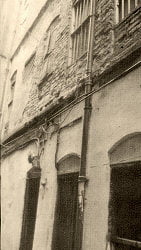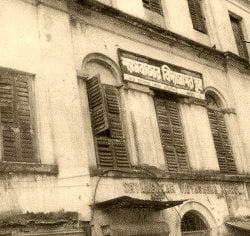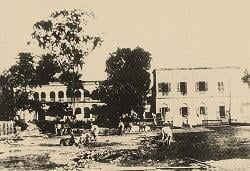Sw. Bhuteshananda - life sketch
Sw. Bhuteshananda - life sketch

Swami Bhuteshanandaji was born at 7.00 in the evening on Sunday, 8 September 1901 (23rd Bhadra 1308 BS) at Somsar, a village in the Bankura district of West Bengal. He took his birth at the ascendant of Mina (Pisces) under the nakshatra Punarvasu (Pollux), on Krishna-Ekadashi tithi. This child was destined to become a great spiritual leader. Named Vijay (Victory) Chandra, he was later to conquer "the hearts and souls of millions of people through his learning, large-heartedness and great spiritual wealth. His father was Purna Chandra Roy and his mother Charubala Devi.
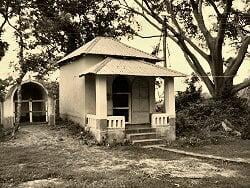
You can edit text on your website by double clicking on a text box on your website. Alternatively, when you select a text box a settings menu will appear. your website by double clicking on a text Somsar, the quiet, peaceful and elegant village on the bank of the river Damodar was not however the native place of the Roy family. The Roy family owing its lineage to a respectable Brahmin family of the 'Gautam' clan of Gaur of the North Bengal came over to Somsar village at the special invitation of the villagers, sometime in the middle of the eighteenth century.Somsar, the quiet, peaceful and elegant village on the bank of the river Damodar was not however the native place of the Roy family. The Roy family owing its lineage to a respectable Brahmin family of the 'Gautam' clan of Gaur of the North Bengal came over to Somsar village at the special invitation of the villagers, sometime in the middle of the eighteenth century.Somsar, the quiet, peaceful and elegant village on the bank of the river Damodar was not however the native place of the Roy family. The Roy family owing its lineage to a respectable Brahmin family of the 'Gautam' clan of Gaur of the North Bengal came over to Somsar village at the special invitation of the villagers, sometime in the middle of the eighteenth century.Somsar, the quiet, peaceful and elegant village on the bank of the river Damodar was not however the native place of the Roy family. The Roy family owing its lineage to a respectable Brahmin family of the 'Gautam' clan of Gaur of the North Bengal came over to Somsar village at the special invitation of the villagers, sometime in the middle of the eighteenth century.Somsar, the quiet, peaceful and elegant village on the bank of the river Damodar was not however the native place of the Roy family. The Roy family owing its lineage to a respectable Brahmin family of the 'Gautam' clan of Gaur of the North Bengal came over to Somsar village at the special invitation of the villagers, sometime in the middle of the eighteenth century.Somsar, the quiet, peaceful and elegant village on the bank of the river Damodar was not however the native place of the Roy family. The Roy family owing its lineage to a respectable Brahmin family of the 'Gautam' clan of Gaur of the North Bengal came over to Somsar village at the special invitation of the villagers, sometime in the middle of the eighteenth century.Somsar, the quiet, peaceful and elegant village on the bank of the river Damodar was not however the native place of the Roy family. The Roy family owing its lineage to a respectable Brahmin family of the 'Gautam' clan of Gaur of the North Bengal came over to Somsar village at the special invitation of the villagers, sometime in the middle of the eighteenth century.
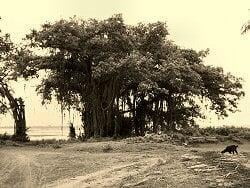
In his childhood days he would often go walking all alone down the dusty red village path deeply shaded by banyan, mango and other trees. Later while reminiscing he said, 'How can I describe how delightful it was to take these walks. Once I went too far away from the village. Finding me at such a distant place, a man from my village asked, 'Where are you going, Thakur?' I said, 'I'm travelling to distant lands.' The man said, 'Enough is enough! Now come with me. I'll drop you at home.' He took me back home and admonished my mother for 'leaving this little boy to travel alone.'
